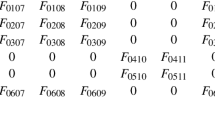Abstract
The first extension of the virtual fields method to the reconstruction of heterogeneous stiffness properties from 3D bulk full-field displacement data is presented in this paper. Data are provided by Magnetic Resonance Imaging (MRI). Two main issues are addressed: 1. the identification of the stiffness ratio between two different media in a heterogeneous solid; 2. the reconstruction of stiffness heterogeneities buried in a heterogeneous solid. The approach is based on a finite element discretization of the equilibrium equations. It is tested on experimental full-field data obtained on a phantom with the stimulated echo MRI technique. The phantom is made of a stiff spherical inclusion buried within a lower modulus material. Preliminary independent tests showed that the material of the inclusion was four times stiffer than the surrounding material. This ratio value is correctly identified by our approach directly on the phantom with the MRI data. Moreover, the modulus distribution is promisingly reconstructed across the whole investigated volume. However, the resulting modulus distribution is highly variable. This is explained by the fact that the approach relies on a second order differentiation of the data, which tends to amplify noise. Noise is significantly reduced by using appropriate filtering algorithms.










Similar content being viewed by others
References
Ophir J, Kallel F, Varghese T, Konofagou E, Alama SK, Krouskop T, Garra B, Righetti R (2001) Optical and acoustical imaging of biological media: elastography. C R Acad Sci Paris 2 Ser IV:1193–1212.
Manduca A, Oliphant TE, Dresner MA, Mahowald JL, Kruse SA, Amromin E, Felmlee JP, Greenleaf JF, Ehman RL (2001) Magnetic resonance elastography: non-invasive mapping of tissue elasticity. Med Image Anal 5:237–254.
Bui HD (1994) Inverse problems in the mechanics of materials: an introduction. CRC Press, Boca Raton.
Tarantola A (2005) Inverse problem theory. SIAM, Philadelphia.
Bonnet M, Constantinescu A (2005) Inverse problems in elasticity. Inverse Probl 21:R1–R50.
Fehrenbach J, Masmoudi M, Souchon R, Trompette P (2006) Detection of small inclusions by elastography. Inverse Probl 22:1055–1069.
MacRobbie DW, Moore EA, Graves MJ, Prince MR (2003) MRI: from picture to proton. Cambridge University Press, Cambridge.
Steele DD, Chenevert TL, Skovoroda AR, Emelianov SY (2000) Three-dimensional static displacement, stimulated echo NMR elasticity imaging. Phys Med Biol 45:1633–1648.
Barbone PE, Gokhale NH (2004) Elastic modulus imaging: on the uniqueness and nonuniqueness of the elastography inverse problem in two dimensions. Inverse Probl 20:283–296.
Skovoroda AR, Emelianov SY, O’Donnell M (1995) Tissue elasticity reconstruction based on ultrasonic displacement and strain images. IEEE Trans Ultrason Ferroelectr Freq Control 42(4):747–765 (IEEE Trans J Lett).
Skovoroda AR, Lubinski MA, Emelianov SY, O’Donnell M (1999) Reconstructive elasticity imaging for large deformation. IEEE Trans Ultrason Ferroelectr Freq Control 46(3):523–535 (IEEE Trans J Lett).
McLaughlin JR, Yoon JR (2004) Unique identifiability of elastic parameters from time-dependent interior displacement measurement. Inverse Probl 20:25–45.
Weaver JB, Doyley M, Cheung Y, Kennedy F, Madsen EL, VanHouten EEW, Paulsen K (2005) Imaging the shear modulus of the heel fat pads. Clin Biomech 20:312–319.
Romano AJ, Shirron JJ, Bucaro JA (2001) On the noninvasive determination of material parameters from a knowledge of elastic displacements: theory and numerical simulation. IEEE Trans Ultrason Ferroelectr Freq Control 45(3):751–759 (IEEE Trans J Lett).
Liew HL, Pinsky PM (2005) Recovery of shear modulus in elastography using an adjoint method with b-spline representation. Finite Elem Anal Des 41:778–799.
Doyley MM, Srinivasan S, Pendergrass SA, Wu Z, Ophir J (2005) Comparative evaluation of strain-based and model-based modulus elastography. Ultrasound Med Biol 31(6):787–802.
Park E, Maniatty AM (2006) Shear modulus reconstruction in dynamic elastography: time harmonic case. Phys Med Biol 51:3697–3721.
Barbone PE, Oberai AA (2007) Elastic modulus imaging: some exact solutions of the compressible elastography inverse problem. Phys Med Biol 52:1577–1593.
Claire D, Hild F, Roux S (2004) A finite element formulation to identify damage fields. Int J Numer Methods Eng 61:189–208.
Grédiac M (1989) Principe des travaux virtuels et identification. Comptes Rendus de l’Académie des Sciences 309:1–5 (Elsevier, in French with abridged English Version).
Grédiac M, Pierron F, Avril S, Toussaint E (2006) The virtual fields method for extractiong constitutive parameters from full-field measurements: a review. Strain 42:233–253
Avril S, Grédiac M, Pierron F (2004) Sensitivity of the virtual fields method to noisy data. Comput Mech 34(6):439–452.
Zienkiewicz OC (1977) The finite element method. McGraw-Hill, New York.
Tikonov AN, Arsenin VY (1977) Solutions of ill-posed problems. Wiley, New York.
Toussaint E, Grédiac M, Pierron F (2006) The virtual fields method with piecewise virtual fields. Int J Mech Sci 48(3):256–264.
Avril S, Pierron F (2007) General framework for the identification of constitutive parameters from full-field measurements in linear elasticity. Int J Solids Struct 44:4978–5002.
Brodie KW (1977) In: Jacobs DAE (ed) The state of the art in numerical analysis. Academic Press, London.
Chenevert TL, Skovoroda AR, O’Donnell M, Emelianov SY (1998) Elasticity reconstructive imaging by means of stimulated echo MRI. Magn Reson Med 39:482–490.
Huntley JM, Saldner H (1993) Temporal phase–unwrapping algorithm for automated interferogram analysis. Appl Opt 32:3047–3052.
Erkamp RQ, Wiggins P, Skovoroda AR, Emilianov SY, O’Donnell M (1998) Measuring the elastic modulus of small tissue samples. Ultrason Imaging 20:17–28.
Skovoroda AR, Lubinski MA, Emelianov SY, O’Donnell M (1998) Non linear estimation of the lateral displacement using tissue incompressibility. IEEE Trans Ultrason Ferroelectr Freq Control 45(3):491–503.
Giraudeau A, Pierron F (2005) Identification of stiffness and dampingproperties of thin isotropic vibratingplates usingthe virtual fields method: theory and simulations. J Sound Vib 284:757–781.
Acknowledgements
We are grateful to René Doucet, Head of ENSAM (Châlons en Champagne, France) who bestowed a leave upon Stéphane Avril for the achievement of this research project, and to EPSRC for partial support. J.M. Huntley is also grateful to the Royal Society and Wolfson Foundation for a Royal Society – Wolfson Research Merit Award.
Author information
Authors and Affiliations
Corresponding author
Rights and permissions
About this article
Cite this article
Avril, S., Huntley, J.M., Pierron, F. et al. 3D Heterogeneous Stiffness Reconstruction Using MRI and the Virtual Fields Method. Exp Mech 48, 479–494 (2008). https://doi.org/10.1007/s11340-008-9128-2
Received:
Accepted:
Published:
Issue Date:
DOI: https://doi.org/10.1007/s11340-008-9128-2




